
Trip from Shoreham, UK, to Bolzano, Italy, September 2017
The main purpose of this quick trip was to check out a potential ski destination. A related EuroGA thread is here.
Bolzano is well located for the Dolomites; specifically Corvara and Madonna di Campiglio. There are no airline flights to Bolzano; they go mainly to Verona, Innsbruck, etc which are a lot further away. These long transfer distances work out very expensive and are normally addressed by various "airport-ski" shuttle services, at widely varying prices, but none of them run on weekdays presumably for economic reasons: most people go for a whole week at a time. Also there are no shuttles covering Bolzano; some of the Verona airport shuttle buses drive through Bolzano but due to disputes with local taxis (which also provide ski shuttle services, albeit at extortionate prices of up to €350 each way) the driver is not allowed to stop there! However since Bolzano is closer to the ski locations, the taxi option is around €200 each way (slightly less than extortionate for 2 people) and there are some public transport (bus) alternatives. Italian bus timetables are not easy to find online; they exist online but tend to be fiction when you actually get there. I did get this at the Bolzano airport information desk.
Here is a glossary for non-aviation readers.
Airport PNR/PPR
Bolzano publishes advance notice requirements for police (customs/immigration) at weekends. However, as is often the case, that isn't the whole story. I emailed them anyway regarding parking and avgas (the AIP says No Avgas, but there is an aeroclub...) and got this:
Our grass apron is available and the cost is the same as you park to the aeroclub, we don't have avgas and for italian law aeroclub normally can not sell AVGAS to aircrat that not are registered in the aeroclub.
However, in Italy things are rarely what they appear when they can be discussed in Italian, so I asked an Italian speaking pilot colleague to phone up the aeroclub and find out the real deal. It turned out that there is no problem at all. However I found that any subsequent emails to the aeroclub had to be google translated into Italian in order to get any reply at all, but that's normal for aviation in southern Europe and for aeroclubs everywhere.
Later I got another email saying they need some forms completed, called New Client and New Aircraft. Also the recent Italian stuff regarding the Zika virus came up
IF you have been in the last 28 days before the schedule day of arrival in one of the country with transmission of Zika Virus Disease, Yellow Fever, Malaria or the presence of the mosquito Aedes Aegypti, we need to receive at least 12 hours before ETA the CERTIFICATE OF RESIDUAL DISINSECTION (attached our form). Otherwise, if you haven’t been directly or via stopovers in one of this countries in the last 28 days, we need to receive a declaration on letterhead from your company signed by the company representative, see attached file HEALTH DECLARATION.
As to which countries the form refers to, they appear here and the relevant bit is this so I was in the clear since I clearly haven't been anywhere near these. The Italian Zika virus business has been a huge issue with Italy, with all sorts of weird stuff going on, with mandatory spraying of aircraft interiors with the toxic liquid, etc. It has only recently died down.
What would have happened if I just filed a flight plan and flew to Bolzano? Quite possibly nothing. However I have been refused, some years ago, a landing clearance at Padova (also in Italy) after they pretended to not have received the PNR for Customs. So it is better to not risk it, for the sake of a few emails.
When writing this writeup 3 months later I looked up the current AIP and this says Avgas is officially available.
Accommodation
With GA travel, there is no short-notice cost penalty so you can stay at home until the destination weather is good. The short-notice hotel issue can be tricky but AirB&B and Booking.com can be very useful and are widely used by pilots. In this case there was nothing on either of these so I used a more popular local booking site Initalia. I got the Parkhotel Luna Mondschein which was really nice and well located.
Pilot
FAA CPL/IR, EASA PPL/IR, ~2300hrs.
Aircraft
The aircraft is this 2002 TB20GT; one of the last made before production ended.
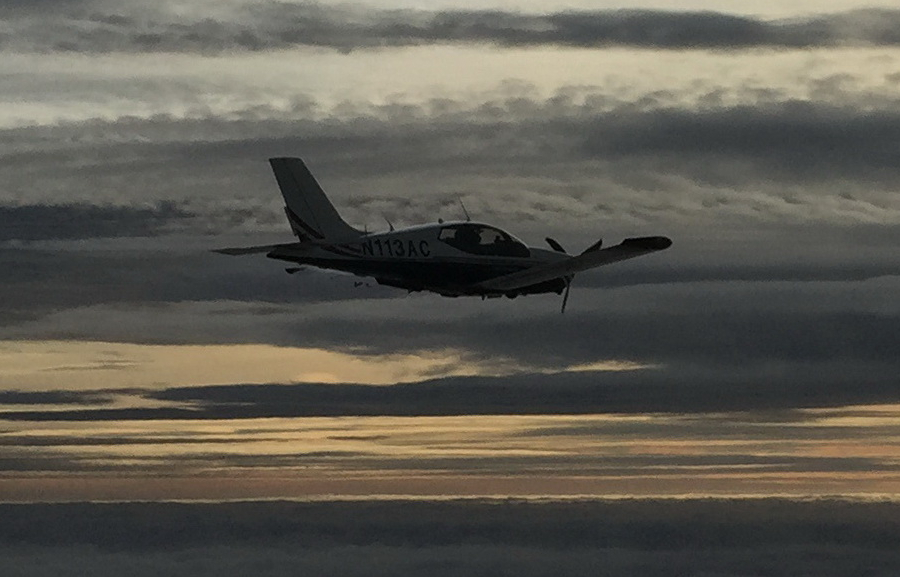
It is equipped for BRNAV (RNAV 5) and can fly ILS and GPS/LNAV approaches using the autopilot. This is sufficient for all practical European IFR flight. The cockpit is largely as delivered in 2002, with a Sandel EHSI installed on the LH side and with the RH side reworked with another Sandel EHSI and arranged to form a usable "pilot panel" so the aircraft can be flown from the RH side.
There is no LPV approach capability but LPV is not yet (to me) operationally relevant in Europe especially if flying to/from the UK which normally needs an airport with Customs/Immigration. France is ahead of most countries in removing ILS approaches (from airports not served by airlines) and replacing them with LPV. Adding LPV capability (which also gives you the very useful "+V" advisory glideslope on most GPS approaches) could be done with a cheap-and-dirty solution of a used GNS430W, but a decent installation would be a Garmin GTN650+GTN750 (or just the 750) or Avidyne 2xIFD540 (the foregoing links are photoshopped mockups) and these jobs would cost about 30k but much more importantly I don't know of any installer who I would let loose on my aircraft on which I value the virtually 100% uptime!
The aircraft has an operating ceiling of 20,000ft in ISA conditions. I have taken it to 21,000ft but in the fairly common summer conditions of e.g. ISA+15 it will reach 18,000ft at MTOW.
Planned upgrades for 2018 are: full TKS anti-ice system (currently I have only propeller protection) and the ADL150 satellite weather receiver.
Routes
These were developed with the Autorouter which was also used to file the flight plans. This facility is currently free. It does IFR flight plans only (I Y and Z but not V). A wiki on it is here. The only other options for autorouting are RocketRoute (which is expensive), and a free PC tool FlightPlanPro which was developed by one of the RocketRoute people before RR came along and which at time of writing is non-functional in much of Europe due to a lack of database updates. For VFR flight plan filing I use EuroFPL. I also use EuroFPL for filing IFR flight plans for unusual situations e.g. where a specific ETA must be filed (to fit inside a purchased airport slot) and the Autorouter aircraft performance model does not allow that.
Some notes on IFR in Europe are here.
Shoreham EGKA - Bolzano LIPB
The MSLP shows a cold front across the route, but these fronts (with almost no wind gradient across them) tend to be relatively benign and usually the TB20 can fly over the top of them. I ended up flying a lot between layers, as might be expected from the IR image which in the absence of stuff on the radar shows some higher altitude stuff with nothing underneath.
MSLP: 1200
IR Radar TAFs/METARs
Autorouter briefing pack
The following day's weather, for the return flight, was also good 0000 0600 1200
The route was filed initially for FL110. The Alps normally need FL140+ but on this flight the filed route was where they are not so high. The flight plan was Y - IFR to VFR.
EGKA SFD DCT ROTNO DCT KONAN L607 SUXIM DCT AGBUL DCT OLIVI DCT MND DCT OKIBA DCT ABTAL L173 RIXED DCT ABGAS DCT AMEXO/N0150F120 DCT OSDER DCT ADILO/N0148F130 DCT KTI DCT NIGEB VFR LIPB
Alternates: Trento LIDT Trieste LIPQ
Trento doesn't have Customs/Immigration so diverting there might generate some "attention" ![]()
598nm as filed
529nm GC
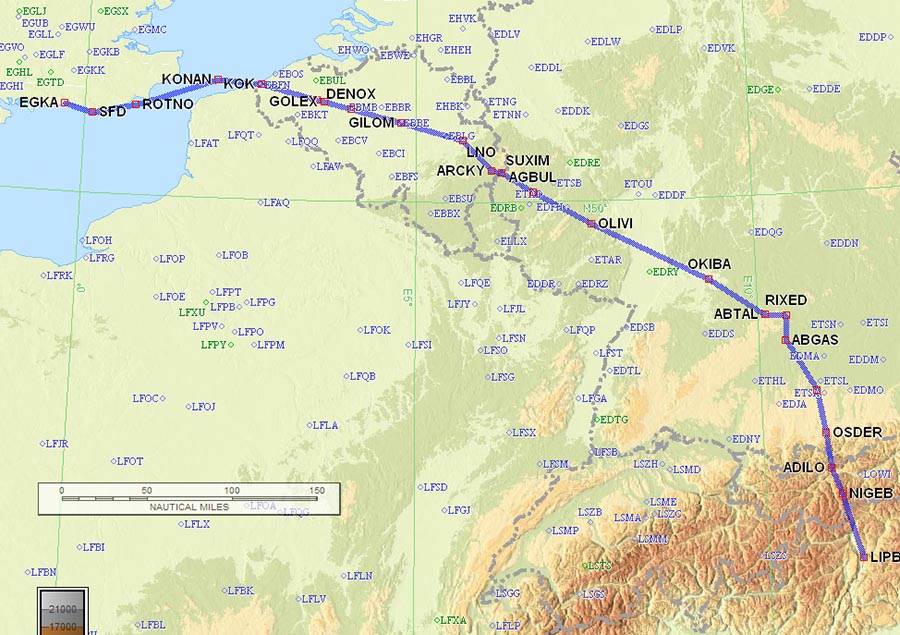
The above really shows the wonderful capability of the TB20. In still air, the above flight would leave you with just under half full tanks!
Actual route flown (FR24)
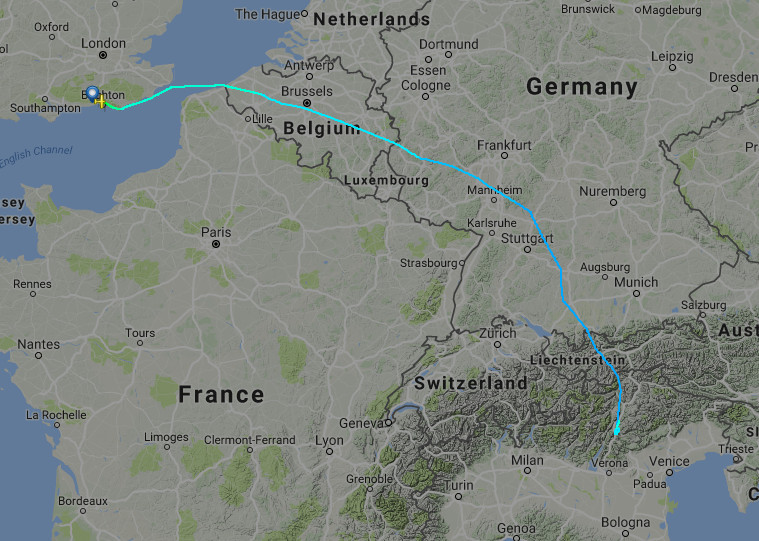
The Eurocontrol track is here.
Departure conditions were great
There was some low haze and fog over the southern UK and the sea
The LFOB (landing fuel on board) forecast settled at 39 USG which is plenty of reserve - around 4 hours. There was about 10kt of tailwind, producing the ground speed of 162kt. The TB20 is not particularly fast but is very economical and its great range avoids time-wasting fuel stops. I worked hard on asking for shortcuts, as always
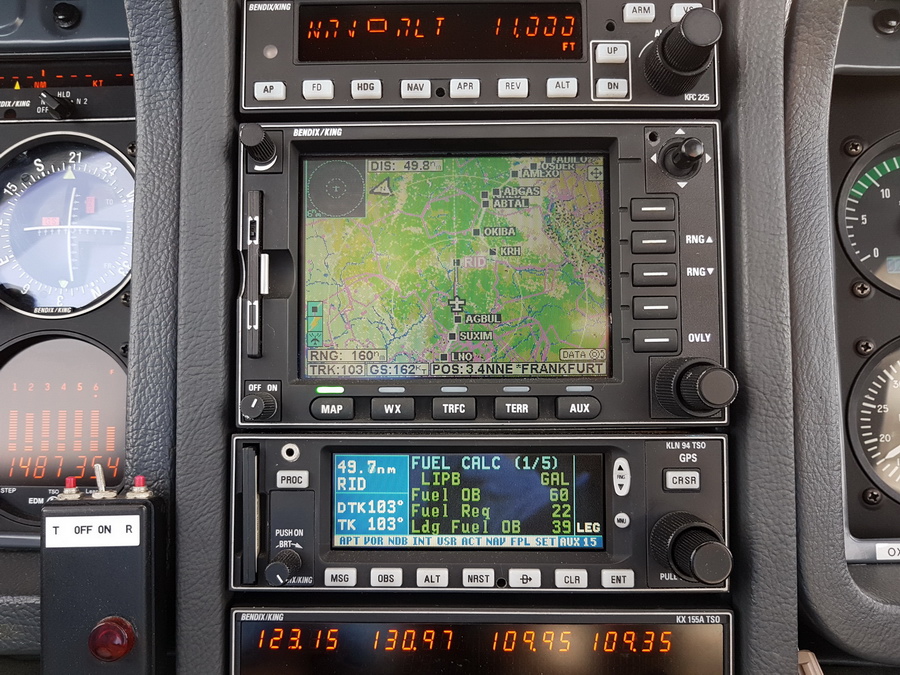
This is quite funny - an A380 1000ft below ![]()
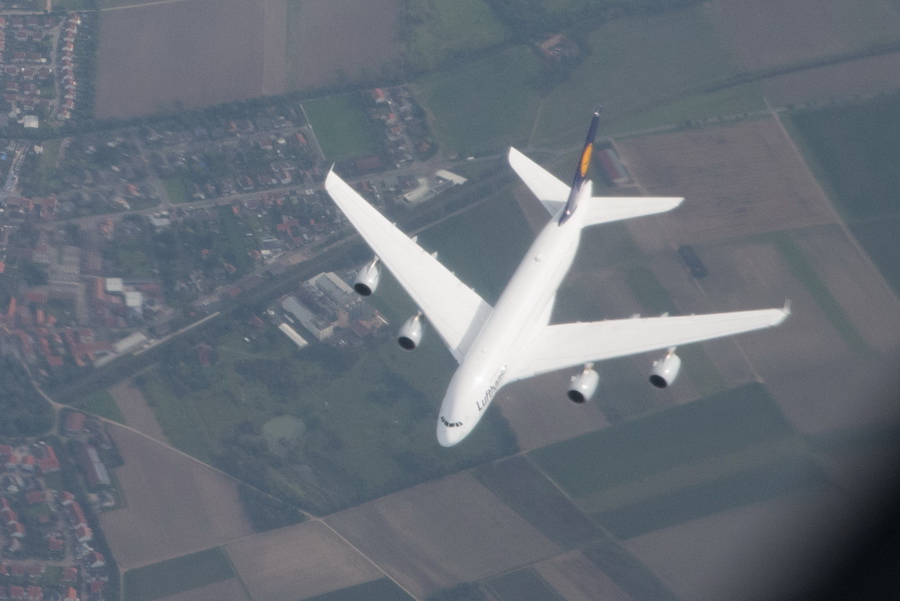
After 3hrs over mostly featureless northern Europe, the Alps finally appear
I got some very unusual hassle with Innsbruck ATC telling me there is “no weather” when I was asking for an avoid. I have never seen this sort of thing in my 12 years of IFR flying. This video at the end of this writeup has the whole thing, starting around 8:30. We had a good debate about this on EuroGA here. It was not until I posted this on EuroGA and some Germans listened to the sound track that it became apparent that a local pilot, speaking in German presumably deliberately to make sure I didn't understand it, said to ATC that there is no weather. The ATCO then substantially exceeded her authority in asserting to me that there is no weather. Obviously ATC cannot see what the pilot can see. She argued that her weather radar is not showing anything but that is nonsense too because radar won't show a great deal of weather that is hazardous to a light aircraft. There were some buildups in the distance which I was trying to avoid. The video is wide-angle and doesn't show them properly.
Being September, the snow here looks like it has been there since the previous winter but actually I am informed by a local pilot that they had snowfalls in August!
This looks a lot closer than it is - we are about 4000ft above the terrain here
The LIPB LOC/DME 01 is authorised only to specially approved crews so I could fly it only under VFR
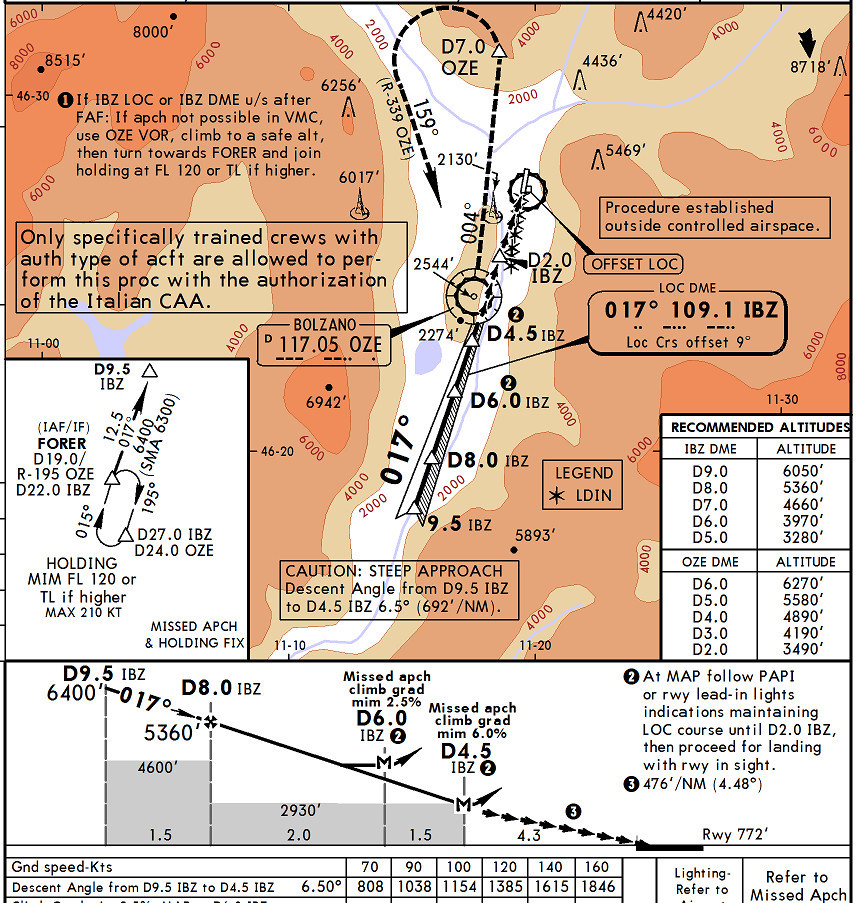
I had earlier checked the Bolzano webcam to make sure we would likely have VMC all the way down; this is my standard procedure for flying into these canyon airports (e.g. Zell am See, Locarno). I advised ATC of the plan and they were perfectly happy. It is much simpler for them to understand, than some long description of a VFR route. The downside of flying the procedure is that you spend about half an hour extra, compared with going to e.g. overhead Bolzano and descending in an orbit all the way down.
Bolzano airport is in the middle of this pic, seen through a lot of haze. We are around FL150 here and slowly descending to FL120
Proceeding towards the FORER hold
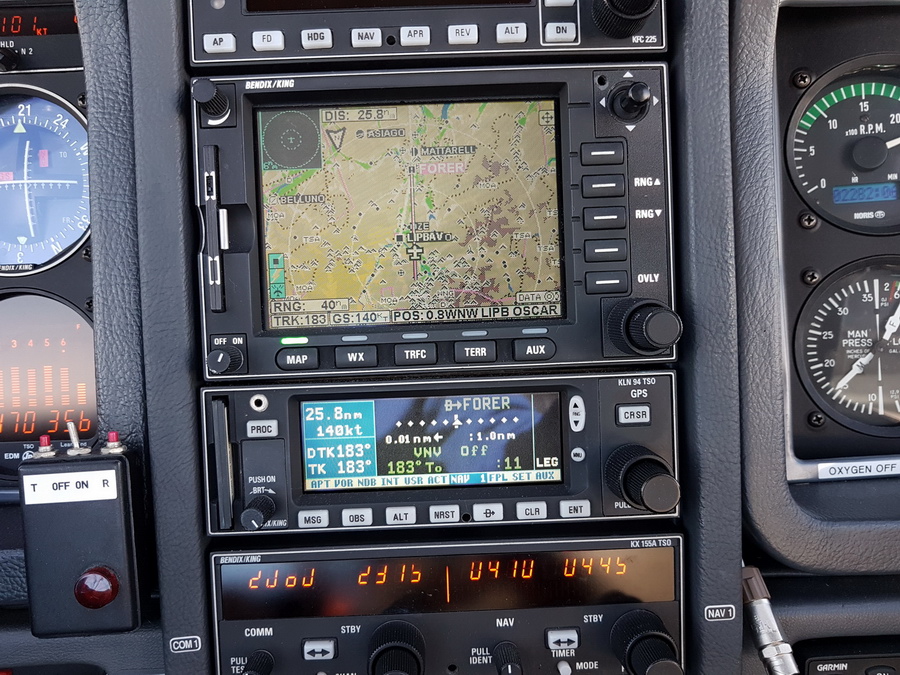
Another view of Bolzano and the airport
Still flying south towards FORER. The mountains look a lot closer than they are! The approach plate MSA is 14500ft here so if doing this for real under IFR one may descend to FL120 only in the hold
After a couple of holds while descending I was at FL120 and this is just after LOC capture, at 24DME. It isn’t clear whether the localiser is supposed to work that far out (the plate starts the LOC at 9.5D) but clearly it does work, and how else would one navigate in “classical IFR” (I don’t mean the GPS OBS mode) otherwise, from FORER to 9.5D? The Jeppesen plate (above) is unclear but the AIP plate does make it clear there is continuity.
Exiting the FORER hold and heading north back towards FORER. FL120 now
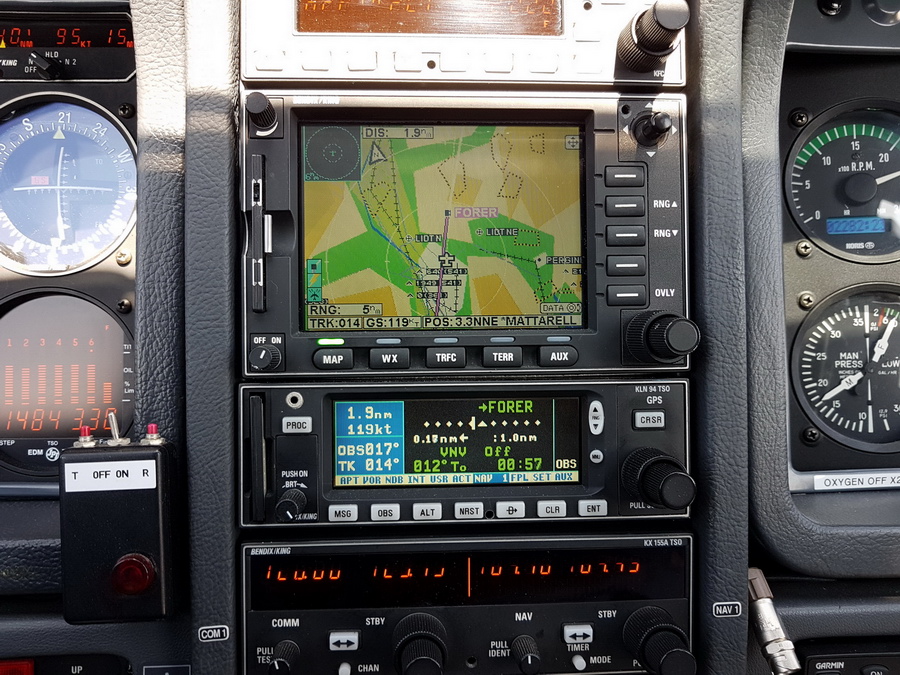
Outbound from FORER, intercepted the localiser, and descending, gear down and Flap 1, at around 1000fpm
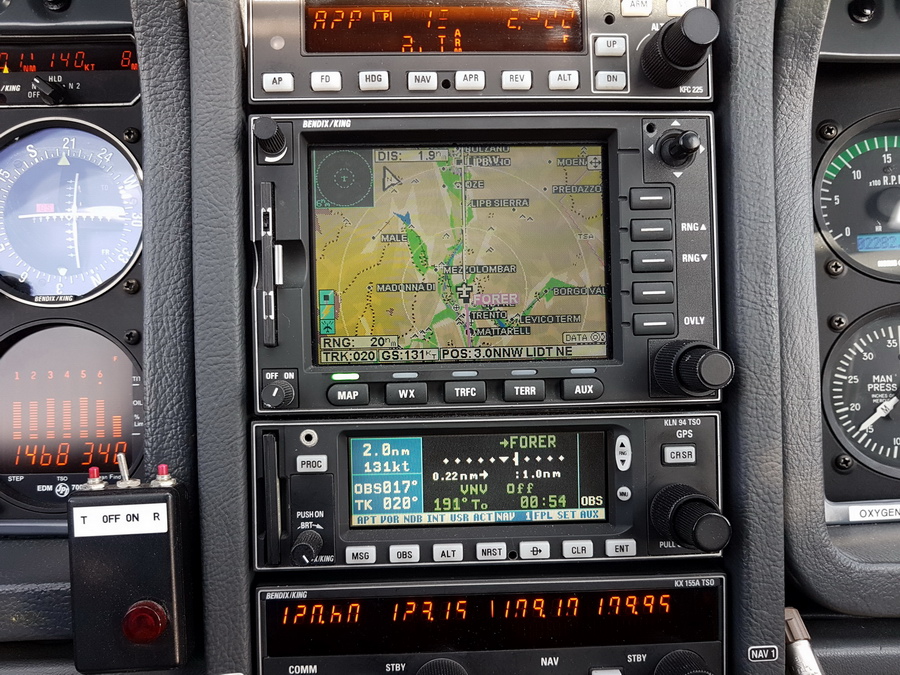
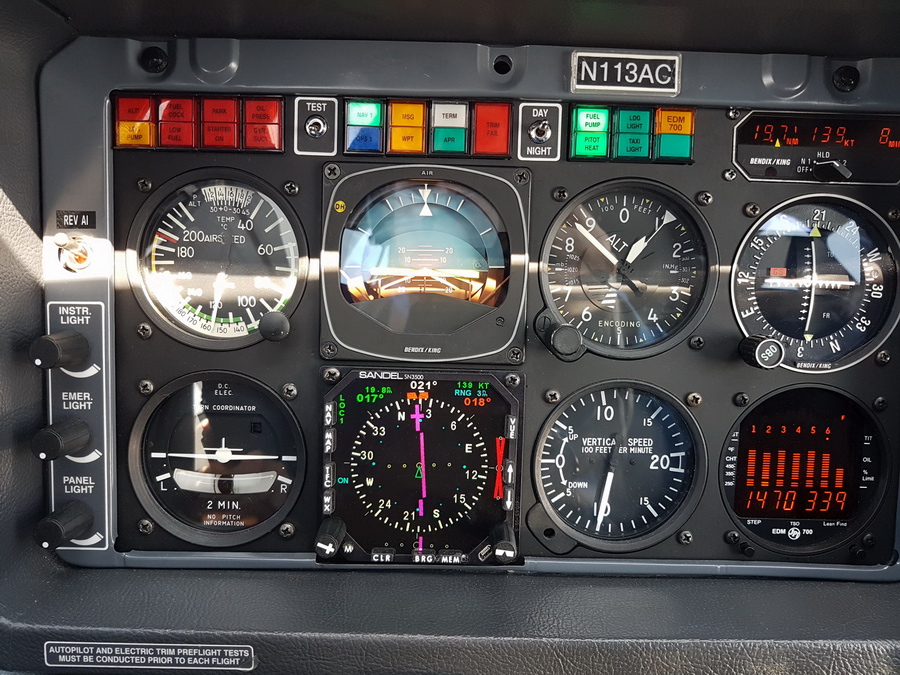
This is approximately the decision height (2930ft) of the LIPB LOC/DME 01 procedure. You can see the runway offset
On final...
Shoreham-Bolzano Photo Gallery
I landed on 01 despite 6kt of tailwind – it’s fine with such a long runway.
There is nothing difficult about this procedure, but obviously – like many others – it will kill you if you completely screw it up in IMC. The alternative VOR approach has a much higher decision height and doesn’t need crew authorisation. The gotcha however is the missed approach which needs a lot of performance if flown as published. I guess VFR pilots fly in from the southern end of the canyon. Someone going missed on the procedure after getting visual can turn back and fly south until out of the canyon, which would be ok if for some reason you cannot get a landing clearance.
After landing I asked to taxi to the aeroclub. Here we are parked next to the club's avgas pump... the previous dire warnings about no avgas turned out to be just hot air, with payment accepted via cash or credit card ![]() However, initially there was nobody around, with just some open hangars suggesting that "somebody is about". I walked over to the main GA terminal (the handling office, etc) and they made some phone calls and after a wait of about an hour in total a guy turned up and operated the pump. The funniest part was that the same handling people who categorically told me by email there is no avgas were the ones who made the phone calls
However, initially there was nobody around, with just some open hangars suggesting that "somebody is about". I walked over to the main GA terminal (the handling office, etc) and they made some phone calls and after a wait of about an hour in total a guy turned up and operated the pump. The funniest part was that the same handling people who categorically told me by email there is no avgas were the ones who made the phone calls ![]() This is just another example of how the Italian official position can differ massively from what actually happens, which is a pity because it screws visitors who play it by the book… Trento has avgas but has no customs/immigration and this could lead a visitor to do one or two more completely unnecessary landings. Fortunately - see the note earlier in this writeup - Bolzano now officially offers avgas.
This is just another example of how the Italian official position can differ massively from what actually happens, which is a pity because it screws visitors who play it by the book… Trento has avgas but has no customs/immigration and this could lead a visitor to do one or two more completely unnecessary landings. Fortunately - see the note earlier in this writeup - Bolzano now officially offers avgas.
This is the view to the south
After refuelling, I was parked among the “elite” and expected a bill between €50 and €100, according to previous - very ambiguous - emails with the hander, but this is worth it for hard surface parking. Bolzano has a lot of executive / bizjet traffic
Inside the terminal is as classy as you ever see for a general aviation airport. Everyone was smart and friendly ![]()
They did not want payment until departure. This is normally not preferred because it can result in delays but the here whole place looked really well organised. There is an apparently permanent police (customs/immigration) presence, even though the current AIP says it is PNR at weekends. Obviously they get bizjet traffic at weekends...
The city is as expected - interesting to walk around and - for those who like classy shopping, with no shortage of classy shops.
For health reasons, I eat mostly plant-based food and it was not too difficult to find. When I ate at a restaurant and asked for a salad, the waiter was shocked that someone would want a salad as the main meal ![]() But they did make a very nice one…
But they did make a very nice one…
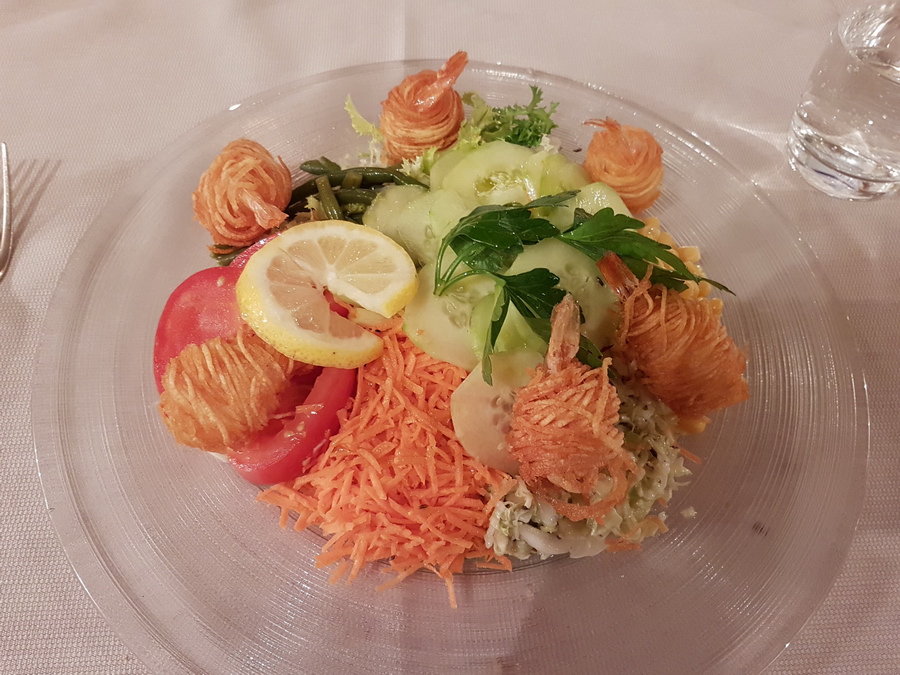
Bolzano LIPB - Shoreham EGKA
MSLP: 1200
IR Sferics
TAFs/METARs Winds
Autorouter briefing pack
The route was filed initially for FL130. The flight plan was Z - VFR to IFR; this was because the TB20 doesn't have the climb performance to fly the IFR SIDs and has to fly up through one of the canyons.
LIPB NIGEB/N0148F130 IFR P66 MOGTI/N0152F110 P66 NESES/N0152F100 P66 KPT/N0151F090 DCT LUP DCT LUPOL Z79 KUNOD/N0152F100 DCT NELLI DCT ABKUT DCT PIREK DCT MAKOT G21 GTQ DCT MTZ DCT MMD M163 SUIPE H9 REM/N0151F090 B3 BILGO/N0149F070 H20 XORBI H40 NEBRU B24 DIPER DCT ELTUD DCT EKLEB/N0147F060 DCT OKPEM DCT TUKVI/N0145F040 DCT SFD EGKA
Alternates: Biggin Hill EGKB Lydd EGMD
593nm as filed
529nm GC
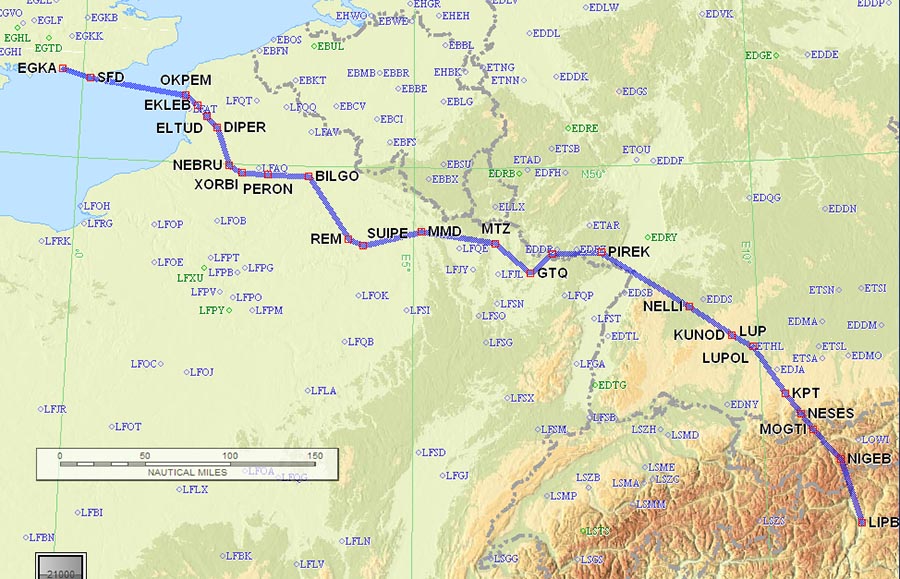
Obviously one would hope to get some shortcuts on the above route, especially on a weekend when the French military (who are responsible for the weird routing around the various bits of prohibited airspace) are not working, and this was achieved pretty well, as the actual route flown (FR24) shows:
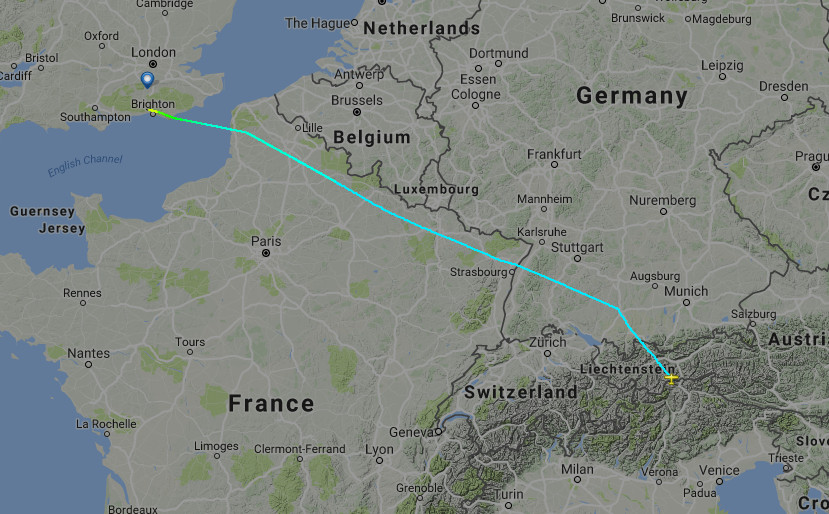
There was no weather affecting the return flight. The MSLP was clear, radar and IR were clear, and the wind forecast showed very light winds. Could not ask for more!
The eventual charge was only €14. It should have been at least 60 but for some reason they didn't bill the handling and other charges. Things are rarely the same twice in Italy but sometimes one is grateful ![]()
Taxiing out past this very fashionable hangar
I asked for a departure from 01 which would be in the right direction but they had some circuit traffic so I had to depart on 19 and do a fairly tight right turn. In the video, around 42:30, it looks rather alarming when the GPWS gets really excited
Climbing up through the canyon leading to the Brenner Pass. I was following the A22 road towards VRP “E” – this has since been renamed to “PBE1”
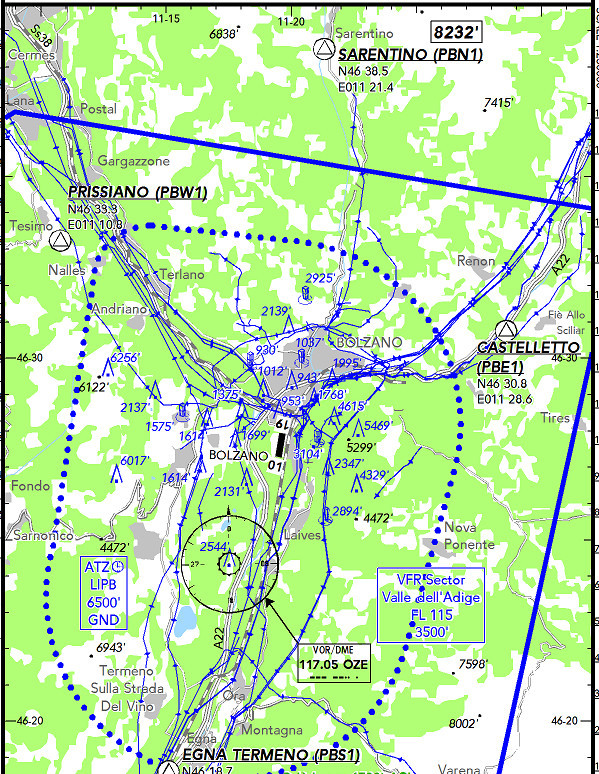
The unmistakeable profile of the Dolomites is now visible in the distance ahead
We are deviating from the filed route because this is a VFR departure and one cannot climb straight up; the TB20 is not a jet and one has to follow the canyons for some distance while climbing. However the climb was very straightforward
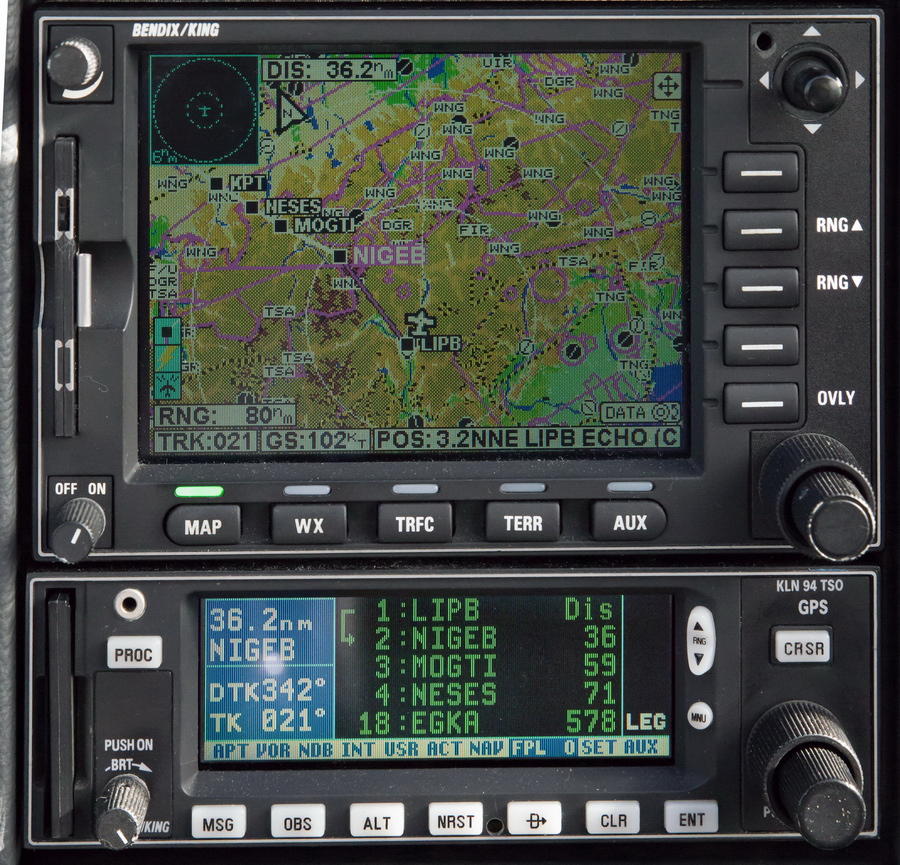
More of the Dolomites - this view is in the direction of Corvara
There was no point in going all the way to the Brenner Pass because the required altitude for terrain clearance, around 13000ft, was reached much earlier, so now we are heading north-west towards the filed route back to the UK
Eventually, after about half an hour, I got an IFR clearance from Innsbruck. I was cleared to FL160 but said that conditions are VMC and requested FL130 for the cruise. This worked out just right, flying just above a load of stuff most of the way back. This phase of flight, where you are waiting for an IFR clearance, can be highly dangerous because in theory you are not allowed to enter controlled airspace. In poor weather, it has resulted in a number of fatal accidents and one has to keep the decisionmaking firmly in the cockpit.
There was some 20kt of headwind - stronger than the GFS forecast - resulting in the ground speed of 126kt. The LFOB was calculated at 36 USG which is 3.5hrs of reserve. As always I asked for every possible shortcut
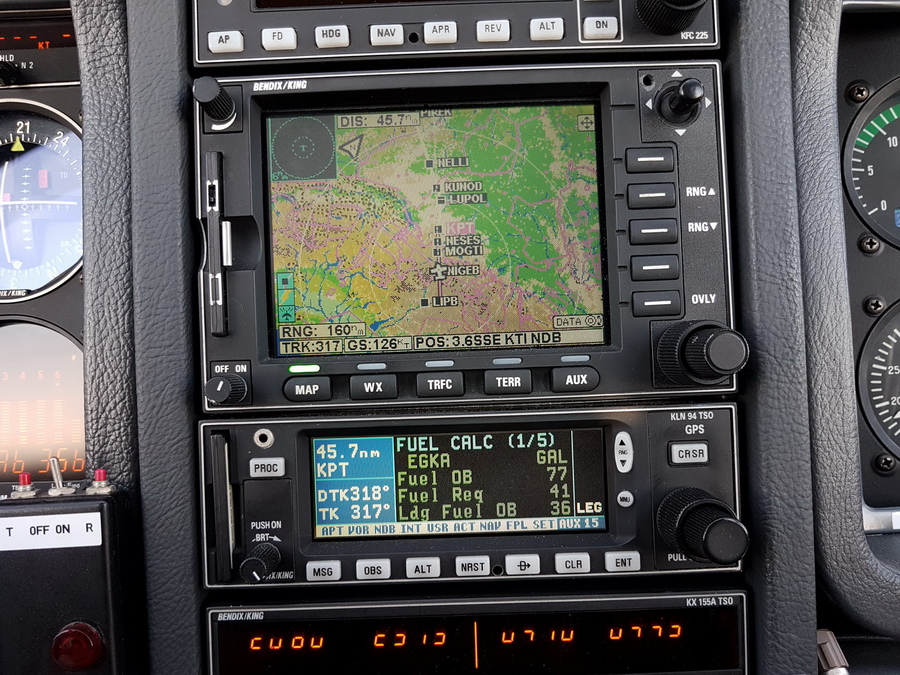
Getting some good shortcuts in NE France - this is quite unusual and is always welcome because traffic below FL200 gets squeezed between the many military areas along the NE French border and the Paris controlled airspace which is operated as totally inaccessible. This – DCT BILGO – is an especially rare shortcut
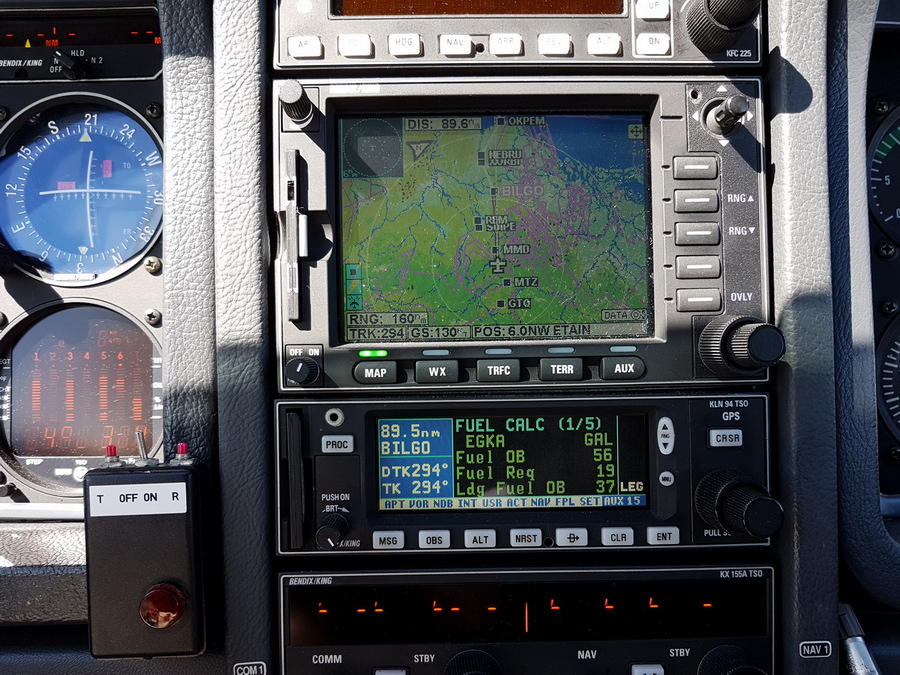
Finally a direct all the way to Shoreham while still over France ![]() This was obviously coordinated with London Control. By this time I was descending so Paris Control handed me to Lille which nowadays can do a handover to London Control, which I got at FL090
This was obviously coordinated with London Control. By this time I was descending so Paris Control handed me to Lille which nowadays can do a handover to London Control, which I got at FL090
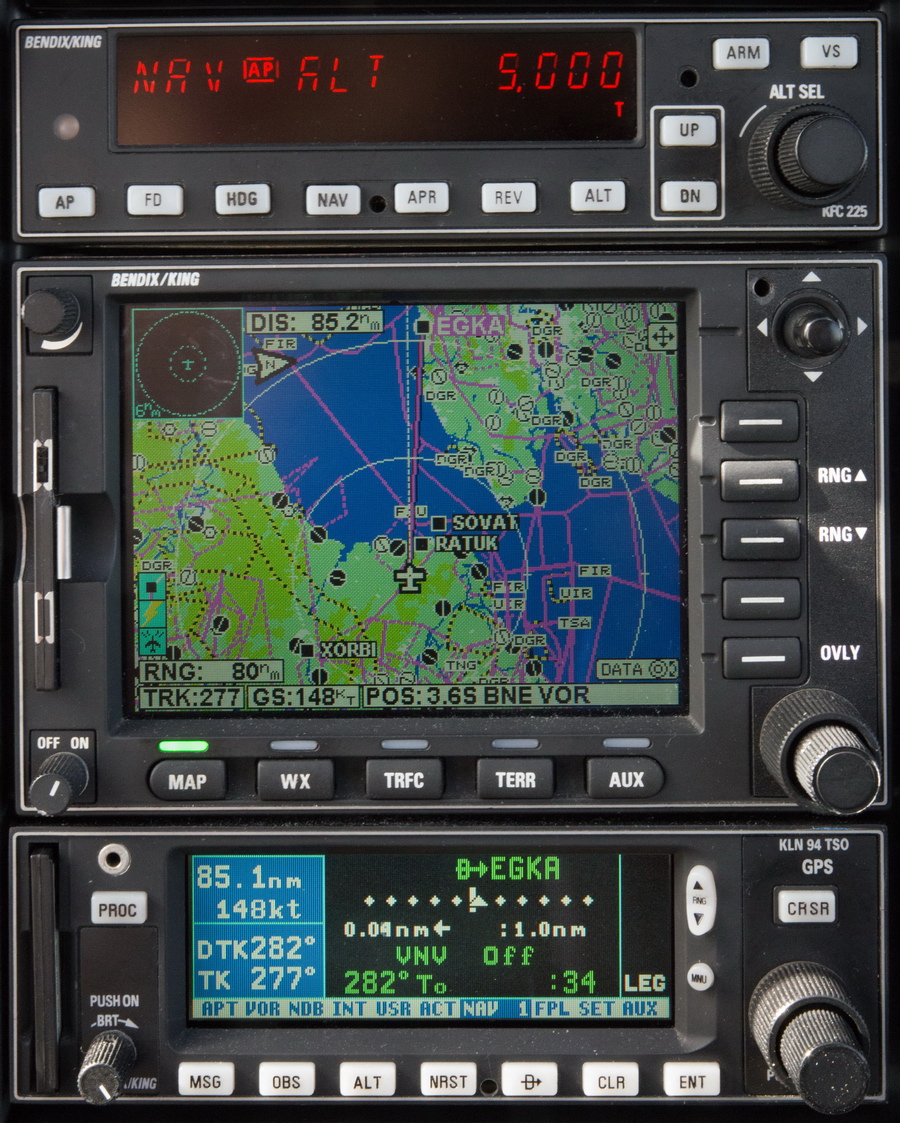
Passing over Le Touquet and the airport at about FL090
Bolzano-Shoreham Photo Gallery
This is the video of the entire flight, there and back, edited to show only the more interesting bits:
TB20 flight Shoreham EGKA to Bolzano LIPB and back from Peter on Vimeo.
Both flights were about 4hrs. The outbound had ~10kt tailwind but flying that instrument procedure took extra time. The return flight had ~20kt headwind but was shorter due to not flying the long instrument approach.
Airport costs (including VAT) for TB20, 1400kg MTOW
LIPB
Total including parking for 1 night: €14.24, comprising of 11.36 for landing and 2.88 for parking and no VAT. NOTE: the official cost is €50-100, so do check!
Avgas: about €2.9 per litre
Oxygen
An oxygen system is practically necessary for IFR in the Eurocontrol system. Occassionally, the weather is nice and one can fly at FL090 or so but most people would still get tired after several hours. Also many routings are not available below oxygen levels, due to controlled airspace structures, and in some cases terrain. Also on this trip it was necessary to go to FL160 which you could not do safely without oxygen.
Very little oxygen was actually used - probably 25% of the 48 cu. ft. cylinder, for 1 person on all the flights. But without oxygen I would have not done the trip because one cuts off half of the aircraft operating ceiling and in the wrong conditions could spend most of the flight in icing conditions and turbulence. In this case the weather looked good but one can never be entirely sure, especially for the return flight.
The Value of an IR
On this trip, the flights could have been done legally under VFR but not on the same route. The planning would have been much more complicated. Accordingly I nearly always fly IFR when outside the UK.
Photos Galleries
The galleries in this report were generated with Juicebox
which has a free version with various limits (e.g. up to 50 photos) and a $45
version which does everything. It runs on Adobe Air and seems to have issues
with large galleries on a win7 64bit machine so I run it in a winXP compatibility
mode ![]() It delivers good
results but has some annoying features e.g. stripping off EXIF data, which should
arguably be preserved, or at least be configurable. It also can't process images
over 4096 pixels which the K1 does exceed so I have to downsize them a bit first.
It delivers good
results but has some annoying features e.g. stripping off EXIF data, which should
arguably be preserved, or at least be configurable. It also can't process images
over 4096 pixels which the K1 does exceed so I have to downsize them a bit first.
Gadgets
No trip report can be complete without this bit ![]()
The video was done with an externally mounted Sony FDR-X3000 camera, at 1080P (full HD) 50 frames/sec and with a video bandwidth (mp4) of about 28 megabits/sec. The result is a high quality video but due to the size (about 10GB per hour) it cannot be hosted on any reasonably priced commercial video hosting site. I also cannot host it on the server used for peter2000.co.uk because of the limited storage allowance. So I use Vimeo and pay them $60/year to give me a 5GB/week upload budget (which is wasted most of the year) but they still downsample the video to around 5 megabits/sec. The result is pretty good but if you want to see the original file there is a Download option on Vimeo. You will need a fast PC to play it however... In case you ask "why not 4K"... well, 4K generates about 100 megabits/sec, is more difficult to edit, stabilised 4K cameras are only just appearing, there is no way to host it online without reducing the quality to something like 1080P, and only a top-end PC with a top-end graphics subsystem can play 4K at 100mbits/sec.
The photos were shot with a Samsung S7 phone and a full-frame Pentax K1 DSLR which is really outstanding especially with the 24-70 f2.8 lens.
The Pentax photos were taken from the camera in DNG raw (the camera takes jpegs to one SD card and raw to a second SD card) and processed in Lightroom to crop and remove some haze. The other program I use instead of Lightroom is ACDSEE PRO which is easier to use in the way it can be used on any randomly chosen picture folder (whereas the Lightroom workflow is more formal) but most professionals use Lightroom and once you are working on a project comprising of say 100 photos it just works better. All these programs try to impose various weird workflows which are counter-intuitive unless you work in just the way they want you to... I went on a 2-day Lightroom course and didn't get very much from it.
Nowadays I shoot raw on the S7 phone as well (using the Footej Camera app which is the only one which works properly for raw and for saving to the SD card; bizzarely, the native camera app won't save raw to the SD card) and use the same Lightroom workflow as for the K1. This produces better photos because it avoids the excessive saturation and unsharp-mask sharpening which the phone does for Jpegs. I think this process takes a smartphone camera about as far as one can get, and is not time-consuming. Even without doing any corrections, or possibly just upping the contrast say 20% on every pic, the result is better than with the native app. There is a little-known subtlety involved with smartphone camera apps: they are all only a little more than a "control panel" for the phone's camera API, so a "100% quality" jpeg from one app is just the same as from another app. The app does little or nothing with the actual photo. In Samsung's case the API is also crippled for 3rd party camera apps so e.g. the focus takes a lot longer.
In theory one could do almost everything needed on a trip with just the Samsung S7 phone or any other good smartphone. It can be used to get weather, file flight plans, and do all the normal comms with people and airports. It can even take "fairly ok" photos. However, a lot of stuff is just too painful on a phone, and some is practically impossible. So what else does one need to carry? I normally chuck in the Samsung Galaxy T700 8.4" tablet. It is functionally practically identical to an Ipad (which I have too, kicking around the house) but is much better for a "power user" because it isn't as restricted as an Ipad. For example it can be expanded with a micro-SD card; say another 64GB. Historically, Apple have never allowed any such storage expansion although I believe that is now changing. The tablet also tethers to the S7 phone's wifi hotspot for internet connectivity. There is a version of this tablet (the T705, which is the one I have) which takes a SIM card and with a contract SIM (I have a Vodafone contract on both the S7 and a cheaper version of it on the T705) you get mobile data almost everywhere on it. This tablet also acts as a "backup phone" because it is a fully functional phone. I have VOIP installed on both the S7 and the T705, via the Localphone VOIP service which works most of the time and this delivers extremely cheap outgoing calls. On the phone I use the CSIPsimple VOIP app and on the T705 there is a built-in VOIP function which seems to work.
However, I have found that anything involving significant typing is still too cumbersome and one cannot beat a proper laptop for sheer productivity. One could use a bluetooth keyboard for the tablet (or the phone) but by the time you carry a decent size one you may as well carry a laptop! I use a Lenovo X230-I7 which is does basically everything anyone could ever need and with the I7 processor is very fast - fast enough for movie editing/rendering and faster than most of today's ~3GHz desktop computers. The X230, bought secondhand in 2013 for £600, new about £1800, is now obsolete but various versions of these very fast and well built laptops come up on Ebay in as-new condition, for peanuts. These I7 quad-core ~2.5GHz laptops are as fast as anything today and particularly excel in video editing and rendering which pushes any PC to its limits. The best laptop today for both power and travelling is probably the beautifully built Dell XPS13 which I use too elsewhere, but it comes at a price of over £1500.
In the aircraft I run a Lenovo T2 10" tablet with Windows 8 and this runs everything needed. It could be replaced with an Android tablet but it is very fast in rendering PDFs (terminal charts, etc) and runs Oziexplorer which I use for VFR charts and the topo maps shown earlier in this article. It is also really solidly made. The current version of it is here. With the planned upgrade to the ADL150 satellite weather download product (which uses WIFI) I may well drop the Windows tablet altogether and use the T705.
Flight times (airborne times)
EGKA-LIPB 4:20hrs
LIPB-EGKA 4:15hrs
This page last edited 1st January 2018